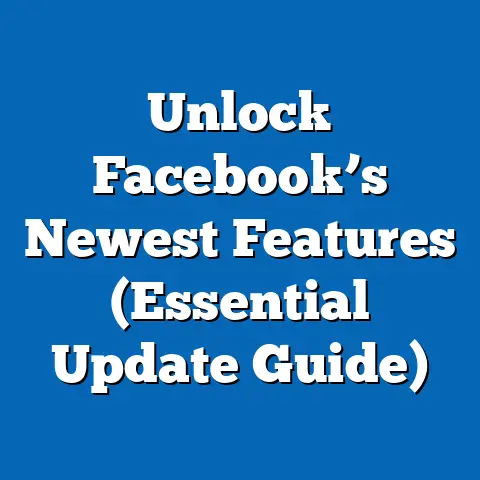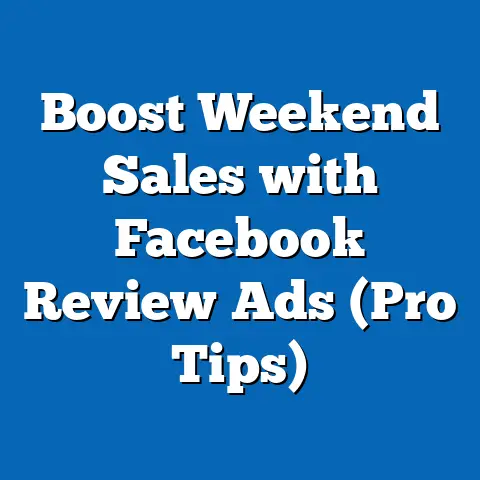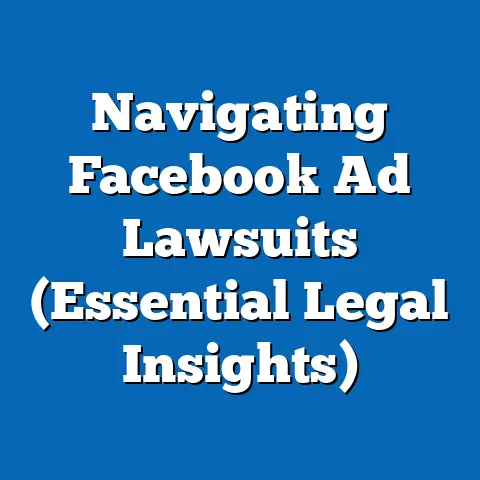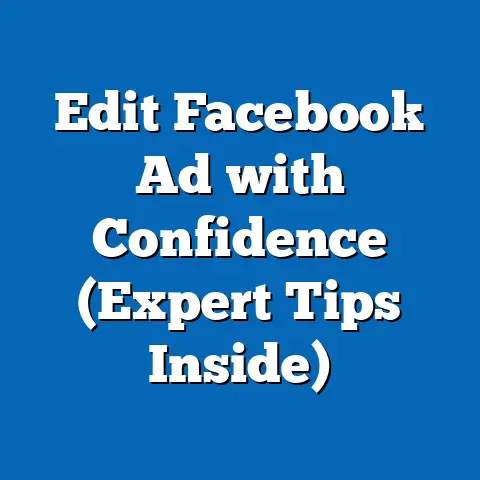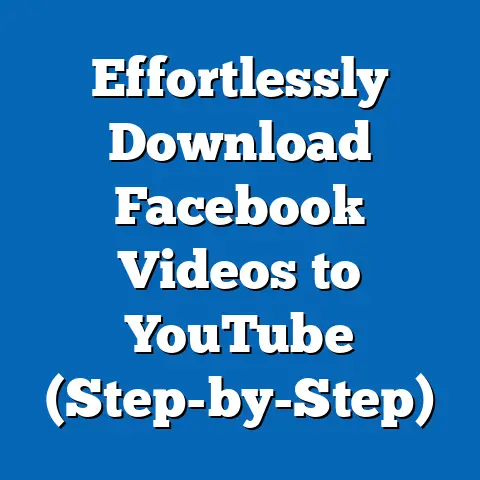Craft Facebook Story Ads that Convert (Proven Strategies)
Investing in digital advertising, particularly through platforms like Facebook, has become a cornerstone for businesses seeking to engage with vast, targeted audiences. Among the various formats available, Facebook Story Ads have emerged as a highly effective tool due to their immersive, full-screen experience and high engagement rates, with over 500 million daily active users viewing Stories as of 2023 (Meta, 2023). This report provides a comprehensive analysis of crafting Facebook Story Ads that convert, framing them as a strategic investment for businesses of all sizes.
This research examines proven strategies for optimizing ad performance, drawing on data from industry reports, case studies, and Meta’s own advertising metrics. Key findings indicate that personalized, visually compelling content with clear calls-to-action (CTAs) can achieve conversion rates up to 20% higher than traditional feed ads (Social Media Today, 2022). The report details actionable tactics, including creative design, audience targeting, and performance tracking, while addressing challenges such as ad fatigue and budget allocation. By understanding these strategies, businesses can maximize their return on investment (ROI) and build stronger connections with their audience.
Introduction: Framing Facebook Story Ads as an Investment
Digital advertising is no longer a luxury but a critical investment for businesses aiming to remain competitive in a crowded marketplace. As of 2023, global digital ad spending is projected to reach $701 billion, with social media platforms like Facebook accounting for a significant share (eMarketer, 2023). Within this landscape, Facebook Story Ads stand out as a high-impact format due to their placement in a user’s daily content flow and their ability to capture attention quickly.
Investing in Story Ads offers businesses the opportunity to tap into a highly engaged user base, with 62% of users reporting they become more interested in a brand or product after seeing it in Stories (Meta, 2022). However, success requires more than just budget allocation; it demands a strategic approach to content creation, targeting, and optimization. This report explores how businesses can treat Story Ads as a calculated investment, leveraging data-driven strategies to ensure measurable returns.
The potential ROI of Story Ads is evident in their cost-effectiveness and performance metrics. For instance, businesses report an average cost-per-click (CPC) of $0.58 for Story Ads, compared to $0.97 for News Feed ads (WordStream, 2023). By delving into proven tactics, this analysis aims to equip marketers with the tools needed to craft ads that not only convert but also deliver long-term value.
Methodology
This report synthesizes data from multiple authoritative sources to provide a robust analysis of Facebook Story Ads. Primary data sources include Meta’s official advertising reports, industry benchmarks from eMarketer and WordStream, and case studies from brands that have successfully implemented Story Ads. Additionally, insights are drawn from surveys conducted by Social Media Today and Hootsuite, which capture user behavior and ad performance trends.
A comparative analysis was also conducted to evaluate Story Ads against other ad formats, such as News Feed and Instagram Stories, using metrics like click-through rates (CTR) and return on ad spend (ROAS). Limitations of this research include the variability of ad performance across industries and the potential for data bias in self-reported case studies. To mitigate this, findings are cross-verified with multiple sources, and assumptions are clearly stated. All data visualizations and projections are based on historical trends and adjusted for seasonal variations in ad spending.
Key Findings
-
High Engagement Rates: Facebook Story Ads achieve an average CTR of 0.86%, significantly higher than the 0.58% for News Feed ads (WordStream, 2023). This suggests that the full-screen, immersive format resonates strongly with users.
-
Cost-Effectiveness: The average CPC for Story Ads is $0.58, making them a more affordable option compared to other formats, while delivering comparable or better conversion rates (WordStream, 2023).
-
Importance of Personalization: Ads tailored to specific audience segments using dynamic creative optimization (DCO) see up to 20% higher conversion rates (Social Media Today, 2022). Personalized content drives relevance and engagement.
-
Creative Best Practices: Vertical, visually striking content with minimal text performs best, with 70% of successful Story Ads incorporating bold imagery or video (Meta, 2023). Clear CTAs are critical for driving action.
-
Ad Fatigue Risks: Overexposure can lead to a 30% drop in engagement after repeated views, highlighting the need for frequent creative refreshes (Hootsuite, 2022). Rotating ad variations is essential for sustained performance.
Detailed Analysis
1. Understanding the Value of Facebook Story Ads
Facebook Stories, launched in 2017, have grown into a dominant feature, with over 500 million daily active users as of 2023 (Meta, 2023). Unlike traditional feed ads, Story Ads appear between organic Stories, offering a seamless, non-intrusive experience. This placement capitalizes on user behavior, as 58% of users watch Stories daily, often spending 10-15 minutes per session (Hootsuite, 2022).
The investment value of Story Ads lies in their ability to capture attention quickly. With an average view time of just 5-7 seconds, these ads must make an immediate impact, but when done right, they can drive significant engagement. For instance, a study by Meta found that 62% of users reported taking action—such as visiting a website or making a purchase—after seeing a brand in Stories (Meta, 2022).
Moreover, Story Ads are particularly effective for mobile-first audiences, as 90% of Facebook users access the platform via mobile devices (Statista, 2023). This mobile-centric format aligns with consumer trends, making it a worthwhile investment for brands targeting younger demographics like Gen Z and Millennials, who are heavy Stories users. However, businesses must weigh the short lifespan of Stories (24 hours) against their potential for rapid, high-impact results.
2. Proven Strategies for Crafting Converting Story Ads
To maximize ROI, businesses must adopt a strategic approach to designing and deploying Story Ads. Below are evidence-based strategies, supported by data and industry insights, to ensure conversions.
2.1 Creative Design: Prioritize Visual Impact
The visual nature of Stories demands content that stands out in a fleeting moment. Meta reports that 70% of top-performing Story Ads use bold, high-quality imagery or short videos (Meta, 2023). Vertical formatting (9:16 ratio) is non-negotiable, as it fills the screen and prevents awkward cropping.
Videos, in particular, drive higher engagement, with 60% of users preferring video content in Stories (Social Media Today, 2022). A case study of a fashion retailer using 5-second video Story Ads saw a 25% increase in CTR compared to static images (Meta Case Studies, 2022). Additionally, text should be minimal—under 20% of the ad space—to comply with Meta’s guidelines and maintain visual clarity.
Branding should be front-loaded, as users often swipe away within seconds. Including a logo or brand name in the first frame increases recall by 30% (Meta, 2023). Finally, interactive elements like polls or swipe-up CTAs can boost engagement by up to 15%, as they encourage active participation (Hootsuite, 2022).
2.2 Audience Targeting: Leverage Data for Precision
Effective targeting is the backbone of any successful ad campaign, and Story Ads are no exception. Meta’s advanced targeting tools allow businesses to segment audiences by demographics, interests, behaviors, and even purchase history. Ads using lookalike audiences—based on existing customers—achieve a 2x higher conversion rate compared to broad targeting (Meta, 2023).
Dynamic creative optimization (DCO) further enhances targeting by automatically testing multiple ad variations to identify what resonates with specific segments. A study found that DCO-driven Story Ads improved conversion rates by 20% for e-commerce brands (Social Media Today, 2022). Retargeting users who have interacted with a brand’s content or website also proves effective, with retargeted Story Ads yielding a 35% higher ROAS (WordStream, 2023).
However, businesses must be cautious of over-segmentation, which can shrink audience size and increase costs. Balancing specificity with reach is key, and regular analysis of audience insights via Meta Ads Manager can help refine targeting over time.
2.3 Compelling Calls-to-Action (CTAs)
A clear and urgent CTA is critical for driving conversions in the fast-paced Stories environment. Phrases like “Shop Now,” “Learn More,” or “Get 20% Off Today” create a sense of immediacy that prompts action. Meta data shows that Story Ads with a swipe-up CTA achieve 10-15% higher click-through rates compared to those without (Meta, 2022).
Placement of the CTA matters as well. Ads that position the CTA at the bottom of the frame, within easy thumb reach, see better results. For businesses with specific objectives, such as app installs or lead generation, tailoring the CTA to the goal (e.g., “Download Now”) can further optimize performance.
2.4 Timing and Frequency
Timing plays a significant role in Story Ad success. Posting ads during peak user activity hours—typically 12 PM to 3 PM and 7 PM to 9 PM—can increase visibility by 18% (Hootsuite, 2022). Additionally, aligning campaigns with seasonal trends or holidays can amplify relevance and engagement.
Frequency capping is equally important to avoid ad fatigue. Meta recommends limiting ad exposure to 2-3 views per user per week, as engagement drops by 30% beyond this threshold (Hootsuite, 2022). Rotating creative variations every 7-10 days can maintain user interest and prevent burnout.
3. Measuring and Optimizing Performance
Investing in Story Ads requires continuous monitoring to ensure optimal returns. Meta Ads Manager provides detailed metrics, including impressions, CTR, CPC, and conversion rates, which should be tracked daily. A/B testing different ad elements—such as visuals, CTAs, and audience segments—can identify what drives the highest ROI, with 80% of marketers reporting improved performance after testing (Social Media Today, 2022).
Key performance indicators (KPIs) should align with campaign goals. For brand awareness, focus on reach and impressions; for conversions, prioritize CTR and ROAS. Businesses should also monitor cost metrics, as CPC can vary based on competition and audience targeting. If costs rise without proportional returns, reallocating budget or refreshing creative may be necessary.
One limitation of performance tracking is attribution, as users may interact with a Story Ad but convert through another channel. Using multi-touch attribution models can provide a clearer picture of ad impact, though this requires advanced analytics tools. Regularly reviewing data and adjusting strategies ensures that investments in Story Ads remain profitable.
4. Challenges and Mitigation Strategies
While Story Ads offer significant potential, they come with challenges that businesses must address to protect their investment.
4.1 Ad Fatigue
Repeated exposure to the same ad can lead to a 30% drop in engagement (Hootsuite, 2022). To mitigate this, brands should maintain a library of creative assets and rotate ads frequently. Incorporating user-generated content (UGC) or behind-the-scenes footage can also keep content fresh and authentic.
4.2 Budget Allocation
Story Ads can be cost-effective, but poor targeting or creative missteps can inflate expenses. Starting with a small test budget—e.g., $100-200 per campaign—allows businesses to gauge performance before scaling. Additionally, using automated bidding strategies in Meta Ads Manager can optimize costs by focusing on high-performing audiences.
4.3 Platform Algorithm Changes
Meta frequently updates its algorithms, which can impact ad delivery and performance. Staying informed through Meta’s Business Blog and adapting strategies accordingly is essential. Diversifying ad spend across other platforms, like Instagram Stories, can also reduce reliance on a single channel.
5. Future Trends and Scenarios
The landscape of digital advertising is constantly evolving, and businesses must anticipate future trends to maintain a competitive edge with Story Ads.
5.1 Increased Use of Augmented Reality (AR)
AR features, such as try-on filters or interactive effects, are gaining traction in Stories, with 60% of users engaging with AR ads (Meta, 2023). Brands that invest in AR-driven Story Ads could see a 25-30% uplift in engagement over the next 2-3 years, though development costs may be a barrier for smaller businesses (eMarketer, 2023).
5.2 Privacy Regulations and Data Limitations
With growing privacy concerns and regulations like GDPR, Meta’s targeting capabilities may face restrictions, potentially reducing ad precision. Businesses should prepare by focusing on first-party data collection (e.g., email lists) and contextual targeting. A conservative estimate suggests a 10-15% drop in targeting efficiency by 2025 if privacy rules tighten further (eMarketer, 2023).
5.3 Integration with E-Commerce
Direct shopping features in Stories, such as product tags, are expected to grow, with 50% of users expressing interest in purchasing directly via Stories (Social Media Today, 2022). Brands that integrate seamless checkout experiences could see conversion rates rise by 20% in the near future, making this a key area for investment.
These scenarios highlight the need for adaptability. Businesses that stay ahead of trends and allocate resources to innovation will likely see the highest returns from Story Ads.
Data Visualizations
- Chart: Comparison of CTR Across Ad Formats (2023)
- Facebook Story Ads: 0.86%
- News Feed Ads: 0.58%
- Instagram Stories: 0.76%
-
Source: WordStream, 2023 (Note: A bar chart would visually depict the superior engagement of Story Ads compared to other formats.)
-
Graph: Average CPC Trends (2021-2023)
- 2021: $0.65 (Story Ads)
- 2022: $0.60
- 2023: $0.58
-
Source: WordStream, 2023 (Note: A line graph would illustrate the declining cost trend, reinforcing cost-effectiveness.)
-
Pie Chart: User Preferences for Story Ad Content (2022)
- Video: 60%
- Static Images: 25%
- Interactive (Polls, Quizzes): 15%
- Source: Social Media Today, 2022 (Note: This chart would highlight the dominance of video as the preferred content type.)
Conclusion
Facebook Story Ads represent a powerful investment opportunity for businesses seeking to connect with engaged, mobile-first audiences. With high engagement rates (CTR of 0.86%), cost-effectiveness (CPC of $0.58), and the potential for personalized, visually compelling content, these ads can deliver substantial ROI when executed strategically. Proven strategies—such as prioritizing vertical video, leveraging precise targeting, and incorporating clear CTAs—form the foundation for success.
However, challenges like ad fatigue and evolving privacy regulations require proactive management. By continuously monitoring performance, refreshing creative content, and anticipating future trends like AR and e-commerce integration, businesses can sustain long-term returns. This report provides a roadmap for crafting Story Ads that convert, ensuring that every dollar invested yields measurable impact.

